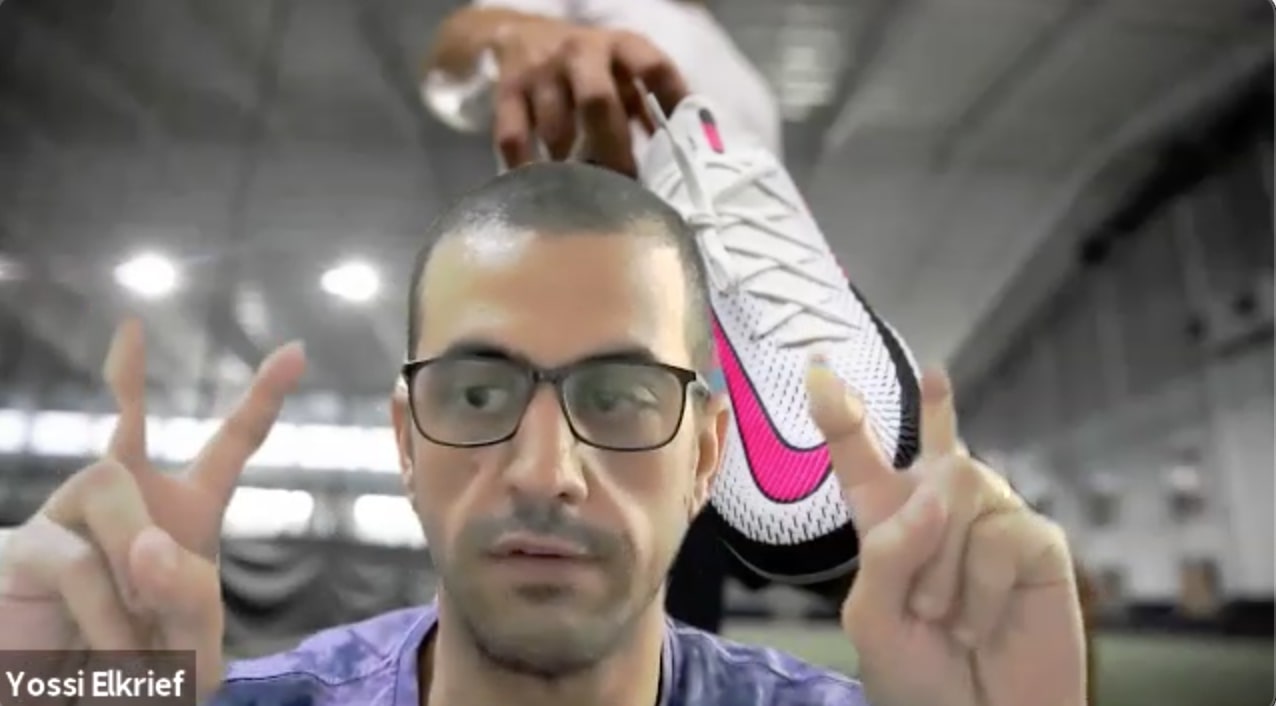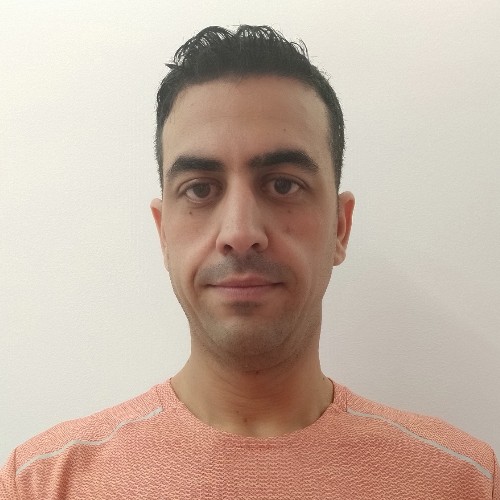
Interview with Mobile Lead at Nike, Author, Google Developers Group Beer Sheva Cofounder, Yossi Elkrief
Thank you for being with us today Yossi, would you like to begin with sharing a little bit about your position at Nike, and what you do?
I joined Nike for a bit more than two years now. I am head of mobile development in the Digital Studio of innovation. It is a bit different from regular app development but we still work closely with all the teams in WHQ, Nike headquarters in the US as well as Europe, China, and Japan. We really work across the globe, and we do some pretty cool things in the realm of innovation. We develop new technologies and try to find ways to harness new technologies or algorithms to help Nike provide the best possible service to our consumers.
I have experience in mobile for the past 13, almost 14 years now. I’ve been involved in Android development since their very first Beta release, even a bit before that. I also worked on iOS throughout the years, and I’ve been involved in a couple of pretty large consumer based companies and startups.
At Nike we have a few apps, such as: Nike Training Club (NTC), Nike Running Club (NRC), and the Nike app made for consumers, where you can purchase Nike’s products.
We work with all of those teams and other teams within Nike, on various apps as well as in-house apps that are specific creations of our studio, where we work on creating new innovative features for Nike.
One major project that is currently working on completing roll out is Nike Fit, recently launched in China and Japan. Nike Fit, is aimed at helping people shop Nike shoes online and hopefully for other apparels in the near future.
How is it working for Nike, as a clothing company, with a background of working mainly for tech companies?
Nike is a company with so much more technology than people realize. We are not just a shoe company or a fashion company.
Our mission is to bring inspiration and innovation to every athlete1 in the world.
We use a tremendous amount of technology to transform a piece of fabric into a piece in the collection of the Nike brand. Nike may be more faceforward than companies that I’ve worked for in the past, but there is a vast array of technologies that we work with in Nike, or work on building upon, to make Nike the choice brand for our customers, now and in the future.
How and in what way does app quality matter for a company that has to retain consumer satisfaction related to both the technology involved and their physical end products?
One of the highest priorities at Nike is the athlete consumers. Because Nike is a brand that is specifically designed and geared toward athletes. We therefore try to keep all of Nike’s athletes at the forefront in terms of their importance to the company. Consumer facing, most of Nike’s products are not the apps. All of my previous experiences in app companies or technical companies that provide a service are pretty different from what I focus on now at Nike. So everything we do at Nike, all the services we provide, are to help serve athletes in their day to day activities, whether this be in sports for professional athletes, or for people with hobbies like running, football, or cycling and so on.
Everything I focus on has to do with providing athletes with better service while choosing their shoes, pants, or all the equipment they need, and that Nike provides so they can best utilize their skills.
Can you tell us a bit about what went into writing your book “Android 6 Essentials”? Do you feel that writing the book improved your own skills as a developer?
I write quite a lot. I don’t get to write as many technical manuals as I’d like, but I do write quite a few documentations, technical documents, and blog posts. Writing the book was a different process, but I really wanted to engage a technical audience, as this audience is very different from that of a poem, or story, which is less for use and more for enjoyment.
Writing the book made me a better person in general because I was working full time in the capacity of my position at the company that I was with at the time, and then on top of all of my regular responsibilities, in order to be able to keep to schedule and hit all of the milestones, and points that I wanted to cover in my book. I had to be very organised and devoted to the project. I had to juggle work, and family, and all of my other responsibilities as well, so I divided my time to make sure I could meet all of my goals. The process was really quite fun because in the end I had something that I built and created from scratch.
I would recommend it, because it gives you an added value that no one else will have, and in the end you have a final product that you can show someone, and say that it was your creation. I think the whole process makes you a better developer, and it helps you understand technology better, because you need to understand technology at a level and to a degree of depth in order to then explain it in writing to someone else.
You also took part in co-founding Google Developers Group Beer Sheva, which is also about sharing knowledge and bettering yourselves as developers, can you tell us a little about that process?
The main aim of Google Developers Group is sharing knowledge. When we share knowledge we can learn from everyone. Even if I built each of the pieces of a machine myself, when I share it with someone else, they can always bring to light something that I was unaware of; some new and interesting way of using it. Sharing with people helps more than just the basic value of assistance. Finding a group of peers that share the same desire or passion for technology, knowledge, and information, this is a key concept in growth, for everyone in general.
On that note, we are seeing an interesting trend in development: even though mobile apps are becoming increasingly more complex, the industry has succeeded in reducing the occurrence of crashes. Is that your experience as well and if so, what are, in your eyes, the main reasons for this shift?
It’s really a two part answer.
Firstly, both Google and Apple are providing a lot more information, and are focusing a lot more on user experience in terms of crashes, app not responding, bad reviews etc. Users are more likely to write a good review if you provide more information, or create a better service with more value for them. Consumers in general are more interested in using the same app, the same experience, if they love it. So they will happily provide you with more information so that you can solve its issues, and keep using your app rather than trying something new. We call them Power Users or Advanced Users. With their help, we can keep the app updated and solve issues faster.
The second part of the answer is that all of the tools, ID integrations, shared knowledge, documentation, has been vastly improved. People understand now that they need to provide a service that runs smoothly with as little interference as possible for the user and they do their part to make sure that these issues remain as low as possible in the apps. We want a crash rate lower than 0.1%. So we work 90% of our time to build an infrastructure that will remain robust and maintain top quality, with a negligible amount of crashes, exceptions, and app issues, in general, that will harm and affect the user experience.
Do you believe that all bugs should always be fixed? If not, do you have ways of defining which ones do not need to be fixed?
As a perfectionist, yes, we want to solve all of the app issues. But in terms of real life, we work with a simple process. We look at the impact of the bug. How many users are being impacted? What is the extent to the impact? What does the user have to do in order to use the service? Is it just a simple work around or is it preventing the user from using an important part of the app?
Do you close insignificant issues, or are they kept open in a back office somewhere?
No, so we are very careful and organized about all of the issues that we have in the system. We document every issue with as much information as possible. Sometimes you can fix an issue with dependency and provide a new version for some dependencies and then because of all the interactions of the code versions you have some issues being solved even though you didn’t do anything. So for example, this doesn’t happen much, but sometimes we have issues in the backlog that can remain unsolved for more than a month.
What is your view on QA teams? Some companies have come out saying that they don’t use QA teams and instead move that responsibility to the developer team. Do you believe that there should be a QA Team?
I believe that companies should have a Quality Assurance team, which is sometimes also called QE, Quality Engineering. I think as a developer, working on various platforms, when you implement a new feature or service, give or take on the architecture of the technology, the actual issue can be quite difficult to find. This requires a different point of view than the developer. When you develop or write the code, you have a different point of view in mind then users often have when it comes to using the app. 90% of the time users will actually often behave differently than developers anticipated when writing the code. So when we design the feature, sometimes we need to understand a bit better how users will interact. We have a product team that we involve and engage on an hourly basis. The same goes for QA. We use QA in our Innovation Studio as well, but the same goes for our apps. We are constantly engaging QA to see how to both resolve issues and understand better how the user will interact with the app.
What is your position on Android Unit testing: How are the benefits compared to the efforts?
With testing in general, some will say it's not necessary at all and will just rely on QA. I don’t side with either. I think it is a mix. You don't need to unit test every line of code. I think that is excessive. Understanding the architecture is more important than unit testing. It's more important to understand how and why the pieces of the puzzle interact- to understand why to choose one flow over another, than to just unit test every function. Sometimes pieces of the puzzle are better understood with unit testing, but it is not necessary to unit test everything. That said, the majority of our code does undergo UI and UX testing.
What do you think about the fact that with Kotlin, you don’t state the exception in the function, this is unlike Java or Swift, which both require it. Which approach do you prefer?
I think for each platform there are different methods of working. Both approaches are fine with me. I think the Kotlin approach for Android, or for Kotlin in general, gives the developer more responsibility as to what can go wrong. You need to better understand the code and the reasons behind what can go wrong with exceptions when working with Kotlin. You can solve it using annotations and documentation, but in general people need to understand that if something can go wrong it will. They need to understand then how to solve it within the runtime code that they are writing, or building. If you are using an API, then API documentation will provide you with a bit more knowledge as to what is happening under the surface, and in terms of architecture, yes you need to know that when using an API function call or whichever function you are using within your own classes, you still need to interact with them properly, so it drives you to write better code handling for all exceptions.
Do you feel the fragmentation of devices or versions in Android is a real difficulty?
Yes, we see different behaviors across devices and different versions, and making sure that the app runs smoothly across all platforms can be a bit rough. But even so, it is a lot better than what we had in the past. I hope that as we progress in time, more and more devices will be upgraded to use an API level that is safer to use, and will mitigate fragmentation. Right now, some of the features that we are building, for example API 24 and above, have major progress in comparison to API 21 and above.
As a final question, which feature would you dream that Android or Kotlin would have?
I never thought of that, because, a week ago I would say camera issues on Android. But a month ago I would say, running computer vision in AI on Android on different devices. Camera issues are due to different hardwares. Google is doing a relatively good job in trying to enforce a certain level of compliance and testing on all devices. You have quite a few tests the device has to pass both in hardware and in API. But we still see many devices attempt to bypass, or give false results to the tests.
I would say giving us support for actual devices as far back as five to seven years, instead of three, and giving an all around better camera experience over all devices.
Thank you very much to Yossi Elkrief for your time and expertise!
Shipbook gives you the power to remotely gather, search and analyze your user logs and exceptions in the cloud, on a per-user & session basis.
Footnotes
-
If you have a body, you are an athlete. ↩

